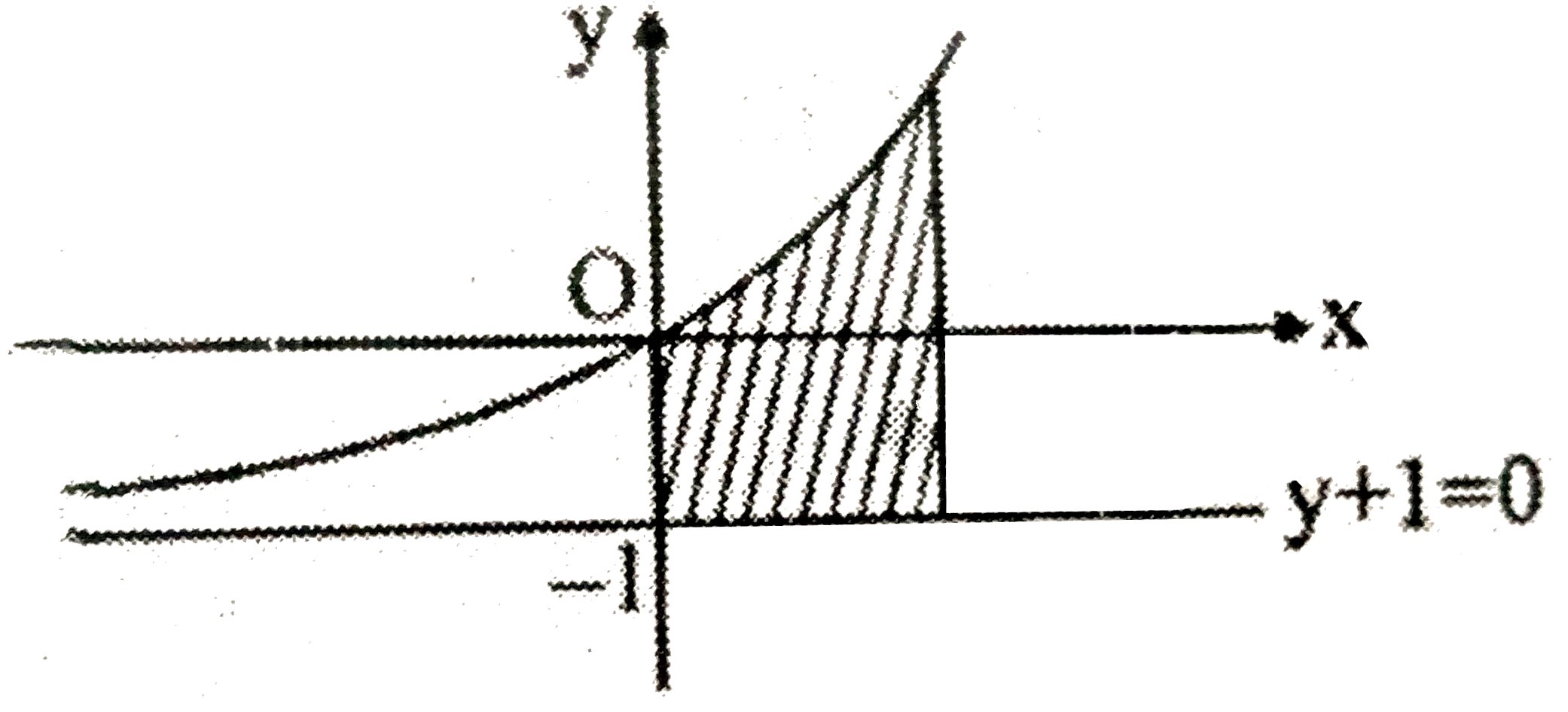y=f(x) is a function which satisfies f(0)=0,f''(x)=f'(x) and f'(0)=1 then the area bounded by the graph of y=f(x), the lines x=0,x−1=0 and y+1=0 is
A
e
B
e-2
C
e-1
D
e+1
Video Solution
Text Solution
The correct Answer is:3

f'(x)f'(x)=1
"integrating"
"ln (x) = x+c<br>f'(x)=e^(x)<br>f(x)=e^(x)-1<br>"Area" = overset(1)underset(x)int (e^(x)-1)dx<br>=e^(x)overset(1)underset(0) = e-1(f'(x))/(f'(x))=1<br>integrating<br>ln(x)=x+c"
f'(x)=ex
f(x)=ex−1
Area=1∫x(ex−1)dx
=ex1=0e−1
|
Topper's Solved these Questions
Similar Questions
Knowledge Check
Let f(x)={2[x]x<02[−x]x≥0, then the area bounded by y=f(x)andy=0 is
A1B2C3Dnone of theseIf the area bounded by f(x)=√1+x2(x>0) the line y = x,y axis and y = - x + a (a > - 1) is k, then area bounded by the graph of f−1 (x), the line y = x between the lines y = - x + 1 and y = - x + a is
A4k−14B2k−12CkDnone of theseThere exists a function f(x) satisfying
f{0}=1,f'{0}=−1,f(x)>0 for all x andAf'(x)<0 for all x.B−1<f''(x)<0 for all x.C−2≤f''(x)≤−1 for all x.Df''(x)<−2 for all x.
There exists a function f(x) satisfying f (0)=1,f'(0)=-1,f(x) lt 0 ,AA x and
View SolutionLet f(x) be a real valued function satisfying the relation f(xy)=f(x)−f(y) and limx→0f(1+x)x=3. The area bounded by the curve y=f(x), y-axis and the line y=3 is equal to
View SolutionLet f(x) be a function which satisfy the equation f(xy)=f(x)+f(y) for all x>0,y>0 such that f'(1)=2. Find the area of the region bounded by the curves y=f(x),y=∣∣x3−6x2+11x−6∣∣andx=0.
View SolutionIf a curve y=f(x) satisfies y''x2+x(y')2=2xy',f(0)=0andf'(1)=1, then f(x) is
View SolutionIf y=f(x) satisfies f(x+1)+f(z−1)=f(x+z)∀x,z∈R and f(0)=0 and f'(0)=4 then f(2) is equal to
View Solution
